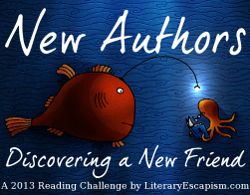
Marit is a young girl of ten when the first bombs fall on Norway, which has become a pawn in the war as the Germans seek to control the ports and the British seek to do the same. Her parents are eager to join the Resistance and help the British as best they can — her father’s knowledge of bridges and roads and her mother’s ability to speak English — but it forces them to break up the family and send their children to Godøy Island to live with their grandfather Bestefar and their aunt Ingeborg. While Marit and her brother Lars have spent summers there, Marit does not get along well with her grandfather who she finds favors her brother.
“She couldn’t believe he was actually speaking to her. She didn’t know if he wanted an answer or not, but she gathered her courage. ‘But Bestefar, if no one fights back, the Germans will be here forever!'” (page 41)
Casanova’s story is based in fact, which can be found in the notes at the back of the book, and her characters are believable as young children caught in a war they do not understand. Marit struggles with her morals as she’s forced by her peers to not speak to her friend Olaf in school because his parents turned in a Norwegian to the Nazis. While Marit is brave at the beginning of the occupation, she falters as any young child would in the face of oppression and danger, and she must come to terms with her own convictions and if they are worth the price she and her family might pay.
Unlike other suspenseful young adult novels in which children are the main protagonists and the most important actors in the plot, Casanova has stuck to the real world dynamics of the world in which children do not know everything and are not the main actors. Marit demonstrates fear as she strives to deliver the klipfish code and when she encounters the Germans up close. The Klipfish Code by Mary Casanova is a realistic account of Norway’s struggles during the Nazi occupation without being too graphic about the violence that came with that regime.

Mary Casanova is an award-winning children’s author of novels and picture books. Many of her books stem from her life on the Minnesota-Canadian border; yet some of her stories have taken her as far away as France, Norway, and Belize for research. Whatever the setting for her books, Casanova writes stories that matter–and stories that kids can’t put down.
Her book awards include: American Library Association “Notable,” Aesop Accolades by the American Folklore Society, Parents’ Choice “Gold” Award, Booklist Editor Choice, and two Minnesota Book Awards. Her books frequently land on state children’s choice book master lists across the country. “The greatest reward for me,” Casanova states, “is when a young reader tells me she or he loves one of my books. For me, it’s all about communicating writer-to-reader through a character and story.”





I’m glad you liked this one as much as I did. I learned a lot from it, too!
I really liked it. Thanks for sharing it with me.
I like reading about WWII from countries other than Germany. This one sounds good.
I am so thrilled that there are these kinds of books out there for young adults so they can learn about these historical things without getting overly bombarded by horrible information.
I bet I’d learn a lot about Norway and WWII.
I certainly learned a lot about Norway during WWII.